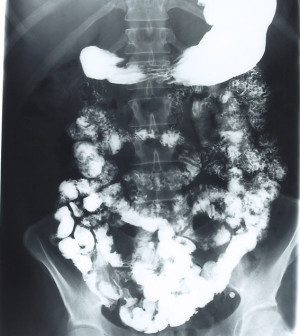- Skip Storing This Everyday Product in the Fridge Door
- Green Tea + B3 Pairing May Boost Brain Health
- Navigating Your Midlife Crisis: Embracing New Possibilities
- City Raccoons Showing Signs of Domestication
- Mapping the Exposome: Science Broadens Focus to Environmental Disease Triggers
- One Week Less on Social Media Linked to Better Mental Health
- Your Brain Changes in Stages as You Age, Study Finds
- Some Suicide Victims Show No Typical Warning Signs, Study Finds
- ByHeart Formula Faces Lawsuits After Babies Sickened With Botulism
- Switch to Vegan Diet Could Cut Your Greenhouse Gas Emissions in Half
Gluten-Free Diet May Help Protect Bones in People With Celiac Disease


Long-term damage to the intestines could raise the risk of hip fractures in people with celiac disease, a new study suggests.
However, the research, published Jan. 16 in the Journal of Clinical Endocrinology & Metabolism, also found that the risk was lower in celiac disease patients who ate a gluten-free diet and whose intestinal tissue had begun to heal.
“Our research confirmed that patients had a higher rate of hip fractures when tissue damage persisted over time,” study author Dr. Benjamin Lebwohl, of the Celiac Disease Center at the Columbia University Medical Center, said in a journal news release. “Sticking to a gluten-free diet is crucial for minimizing tissue damage and reducing the risk of a serious fracture that could cause other complications.”
Celiac disease is an autoimmune disorder that affects about 1 percent of people in the United States, according to the researchers. People with the condition have an immune response in the small intestine when they eat the protein gluten, which is found in grains such as wheat.
It’s known that people with celiac disease are at heightened risk for broken bones, but it wasn’t clear if their fracture risk remained high long after they began a gluten-free diet, the researchers said.
In this study, Lebwohl and his colleagues analyzed intestinal tissue samples from more than 7,100 people in Sweden who were diagnosed with celiac disease between 1969 and 2008. They underwent follow-up intestinal biopsies within five years of diagnosis, and 43 percent were found to have persistent damage in the small intestine.
All the patients had a similar risk of hip fracture at the time of the follow-up biopsy, the study found. But those with persistent intestinal damage had a greater risk five years after the follow-up biopsy, indicating a higher long-term risk.
“Physicians have debated whether people with celiac disease actually benefit from a follow-up biopsy to determine the level of tissue healing taking place,” Lebwohl said. “These findings suggest that a follow-up biopsy can be useful for predicting complications down the road.”
Lebwohl’s colleague Dr. Jonas Ludvigsson, of Karolinska University Hospital and the Karolinska Institute in Stockholm, Sweden, also weighed in.
“We believe that giving the mucous membrane — the moist tissue lining the small intestine — a chance to heal can lower the risk of complications, including bone fractures, in celiac patients,” Ludvigsson said in the news release.
More information
The American Academy of Family Physicians has more about celiac disease.
Source: HealthDay
Copyright © 2025 HealthDay. All rights reserved.










